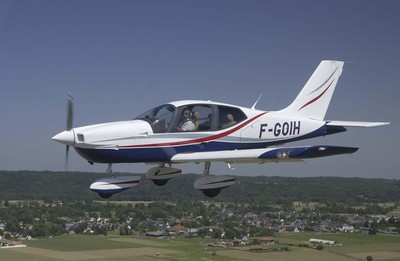Factual Report From Accident Released By The Board
A Daher Socata TB10 Tobago that went down during a pre-purchase demonstration flight on August 19, 2012 "should not (have been) flown," according to a mechanic who worked on the airplane. The owner of the airplane and the prospective buyer's wife were fatally injured in the accident. The prospective buyer was seriously injured.

In the NTSB's factual report on the accident, the buyer said that he intended to examine and photograph the maintenance logbooks and the Airworthiness Directives log, then fly the airplane around the airport traffic pattern with the owner. If he was satisfied with the maintenance logs and the performance of the airplane, he was going to order a pre-purchase examination of the airplane from a maintenance facility that specialized in the Socata.
FAA records indicated the airplane was manufactured in 1991 and was issued a ferry permit on June 20, 2012, in order to relocate the airplane and perform an annual inspection and other maintenance at HWV. Although the maintenance records were not recovered, the investigation revealed a two-page handwritten list of discrepancies for the airplane, prepared by the mechanic who relocated the airplane to HWV and was performing the maintenance on it. He stated that there were no anomalies with the performance and handling of the airplane on the ferry flight to HWV, but that the tachometer was "intermittent" and appeared to work properly only at high rpm engine settings.
Item number 27 on the mechanic's list was "Carb[uretor] has sediment in bowl – disassemble & clean." The item was checked in the margin and 3 hours of labor was annotated and billed.
The buyer stated that the airplane had been posted on the internet for sale, but that the owner did not reply to several requests to see the airplane and its records. He and his wife flew to Mattituck, New York, where the airplane had been parked for several years, to examine the exterior of the airplane. Afterwards, they continued to try to contact the owner. After several months, the owner finally responded to the buyer and informed him that the airplane had been flown to HWV for an annual inspection and correction of maintenance discrepancies in preparation for its sale.
Prior to the buyer’s examination and test flight of the airplane at HWV, the owner represented to him in emails, text messages, and over the telephone that the annual inspection was completed, that there were no outstanding discrepancies, that the airplane was airworthy, and that it was ready for sale.
FAA inspectors, who responded immediately to the accident site, visited the mechanic at his facility the same day. The inspectors requested the maintenance records of the accident airplane, but the mechanic insisted that he did not possess them, and that he had surrendered them to the owner to "make copies." In a series of interviews with the FAA, as well as a statement submitted through his attorney, the mechanic stated that he did not complete the annual inspection because of the faulty tachometer, and because the pilot had complained about a lack of engine power following a flight in the accident airplane on August 16, 2012, 3 days prior to the accident. He stated that he made no effort to troubleshoot the engine power issue, because the airplane’s tachometer was not operational.

The owner had a friend accompany him on the flight 3 days before the accident. In an interview, the friend explained that the airplane "would not climb properly" and never reached an altitude above 300-400 feet. The friend heard the owner complain to the mechanic that the tachometer was inoperative and that there was "something wrong with the power" that prevented the airplane from climbing normally. A witness to that flight reported to the FAA that he saw the airplane "struggling to get into the air." He described the airplane as "extremely" nose-high and tail-low, "barely" clearing the trees, "struggling" around the traffic pattern, and finally completing a "hard landing." The same witness observed the accident flight, and said that the airplane used the full length of the runway and again had "trouble" taking off.
According to his lawyer, the mechanic brought the airplane into the hangar on the day of the accident for the buyer's inspection, and then subsequently moved the airplane back outside for the owner, and told the owner the airplane "should not be flown." He also briefed the buyer about the features of the "new tach[ometer]" at the request of the owner because the tachometer was inoperative. The owner, the buyer, and his wife then left the hanger, and the airplane was heard to start and taxi away. The mechanic told his lawyer he "never thought" the owner would fly the airplane.
After the accident, the FAA inspectors who responded to the maintenance facility recovered the buyer’s camera tripod from the bed of the pilot/owner's pickup truck. The buyer stated that he placed the tripod next to the maintenance logbooks on a work table in the hangar just prior to the accident flight.
(TB10 Tobago pictured in file photo. Not accident airplane.)
 Classic Aero-TV: The Switchblade Flying Car FLIES!
Classic Aero-TV: The Switchblade Flying Car FLIES! ANN FAQ: Q&A 101
ANN FAQ: Q&A 101 ANN's Daily Aero-Term (04.12.24): Discrete Code
ANN's Daily Aero-Term (04.12.24): Discrete Code ANN's Daily Aero-Term (04.13.24): Beyond Visual Line Of Sight (BVLOS)
ANN's Daily Aero-Term (04.13.24): Beyond Visual Line Of Sight (BVLOS) ANN's Daily Aero-Linx (04.13.24)
ANN's Daily Aero-Linx (04.13.24)




